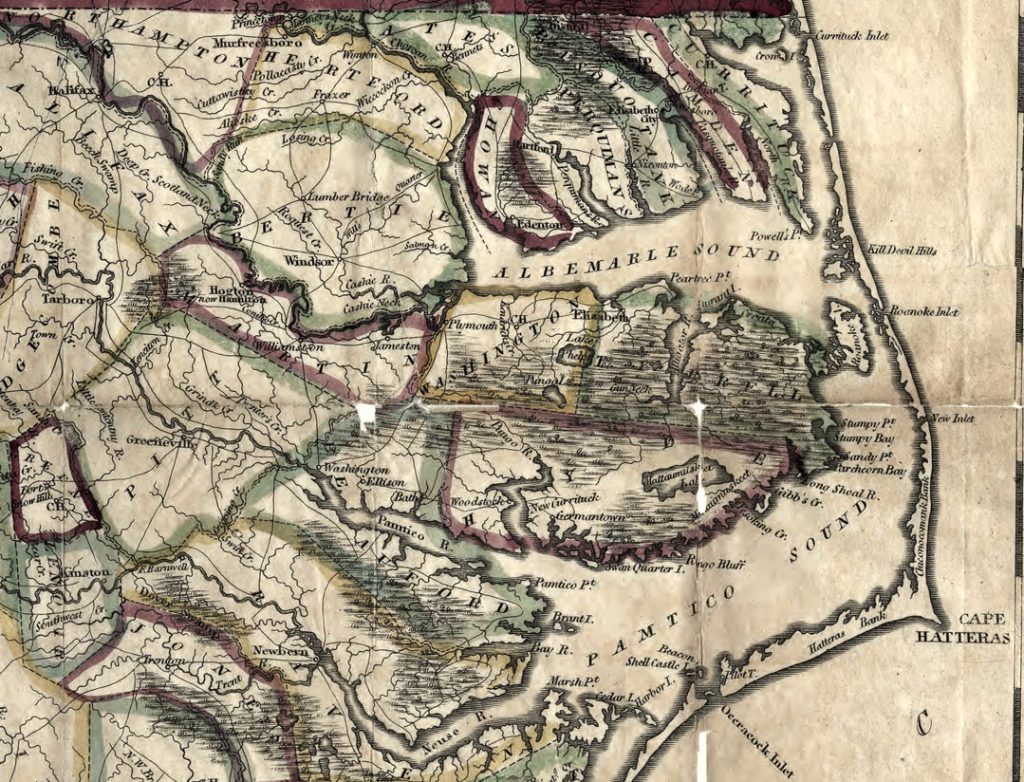
Welcome to the Outer Banks where, as the saying goes, we live on island time...except we don't really live on islands. More like sandbars that have managed to rise from the sea.
That really is what a barrier island is and the Outer Banks are barrier islands and like all barrier islands they are not a permanent land mass. Left to their own devices, barrier islands migrate, generally to the shore.
The process is well documented. A large storm overwashes the sandbar. Sand is picked up from the ocean side and deposited on the landward or estuary side.
The evidence of that process can be clearly seen if you know what to look for.
Where the Inlets Lived
On barrier islands, inlets open and close all the time and as they do so they leave a very clear footprint of where they have been.
At the north end of Duck, looking out across Currituck Sound, the water is dotted with small muddy islands. That is the remnants of Caffey's Inlet that was open from about 1770-1811. The small islands are sand deposits from when the inlet was open.
More evidence? Check out the whole north end of Currituck Sound.
Currituck Inlet was so well known and so well defined that at one time the fledgling US Government established a customs house at what is now the town of Currituck. The customs house closed in 1828, as did Currituck Inlet.
The process continues to this day.
On Pea Island, in 2011 Hurricane Irene opened a passage to the sea that has historically been an inlet. The area is called New Inlet and since it was first noted by European explores in 1656 it has spent far more time open than closed.
Nonetheless, the processes that allow for the ocean to overwash the sandbars and move the Outer Banks to the west have been dramatically slowed by human intervention.
Although the Outer Banks are barrier islands, there are a couple of true islands that are a part of what is typically included in a description of the area. It should be noted, though, that they are not directly on the shoreline.






